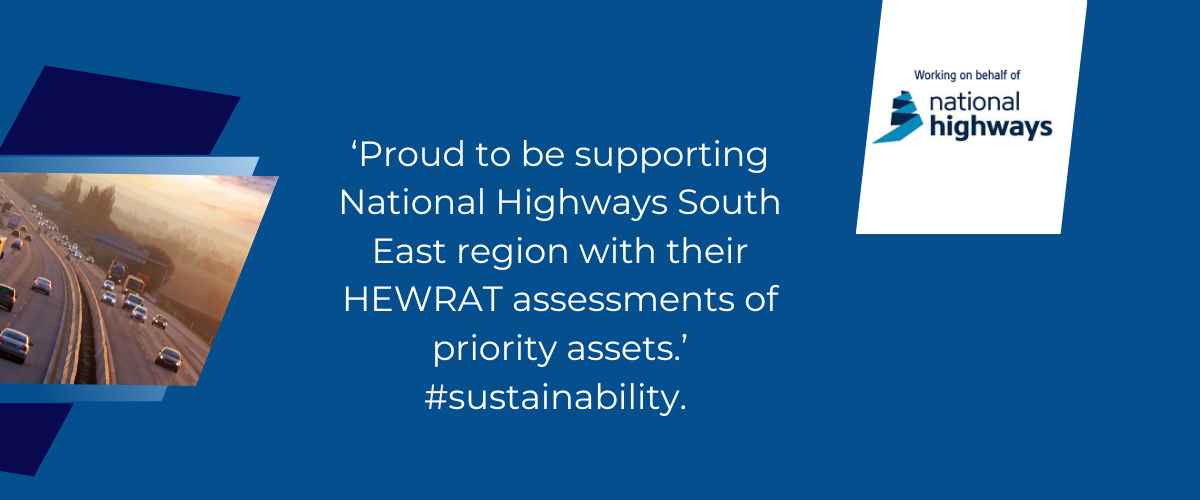HEWRAT Surveys
 Highways England and the Welsh Government have a duty not to pollute, therefore, National Highways has an ongoing programme whereby outfalls and soakaways on the Strategic Road Network (SRN) are evaluated with respect to the pollution risk they represent to receiving watercourses and groundwater. Discharges from road runoff must be designed so that water quality within receiving surface waters (following mixing of the road discharge and receiving waters), does not exceed published Environmental Quality Standards. Road drainage shall not be discharged into lakes, ponds, canals, or reservoirs unless a site-specific risk assessment demonstrates that this would represent no or minimal risk to the water quality of the lake, pond, canal or reservoir. Highways England water risk assessment tool (HEWRAT) analysis calculates the risk of a pollution incident occurring due to routine road runoff.
Highways England and the Welsh Government have a duty not to pollute, therefore, National Highways has an ongoing programme whereby outfalls and soakaways on the Strategic Road Network (SRN) are evaluated with respect to the pollution risk they represent to receiving watercourses and groundwater. Discharges from road runoff must be designed so that water quality within receiving surface waters (following mixing of the road discharge and receiving waters), does not exceed published Environmental Quality Standards. Road drainage shall not be discharged into lakes, ponds, canals, or reservoirs unless a site-specific risk assessment demonstrates that this would represent no or minimal risk to the water quality of the lake, pond, canal or reservoir. Highways England water risk assessment tool (HEWRAT) analysis calculates the risk of a pollution incident occurring due to routine road runoff.
Pollution concentrations by highways discharges are calculated based on a derived relationship linking pollutant concentrations to average traffic flows and climatic area.
The priority outfalls programme classifies the risk from highway outfalls as:
A (Very High);
B (High);
C (Moderate);
D (Low);
X (Risk Addressed).
The tool has a pass/fail indicator for Environmental Quality Standards, and the inclusion of a matrix for assessing risks to groundwater. The matrix for assessing risks to groundwater, also incorporates the percentage of soil organic matter. This reflects the findings of Highways England research, showing that organic matter present within soils can provide suitable environments for microbes to degrade hydrocarbons. The research demonstrated that shallow soakaway/infiltration systems offer significant potential for pollutant attenuation and should be the preferred method of discharge for road drainage. Further detail is contained within CD530 (Design of Soakaways) which replaces HA118/06.
When should you consider an Environmental assessment?
- the project has the potential to affect an existing watercourse in terms of water quality, hydromorphology or water quantity
- the project has the potential to affect a floodplain
- the project has the potential to cross an existing watercourse where upstream flooding is an existing problem or where there has been significant development in the upstream catchment since the crossing was built
- the project has the potential to change either the road drainage or natural land drainage catchments
- the project has the potential to lead to an increase in traffic flow of more than 20%
- the project has the potential to change the number or type of junctions
- is any of the project located within flood zone 2, flood zone 3 or a source protection zone
- earthworks result in sediment being carried to watercourses
- the project has the potential to allow drainage discharges to the ground
When should you consider a HEWRAT assessment?
- infiltration of routine runoff to ground is proposed as part of the project
- unlined road drainage is proposed
- road drainage discharges to a watercourse that dries up in most years
- the Q95 flow of the watercourse is one litre per second or less.
Outcomes of a HEWRAT assessment
- a pass or fail result for acute impacts from soluble pollutants
- a pass or fail result for chronic impacts due to sediment related pollutants
- compliance with EQSs annual average concentrations of soluble pollutants

